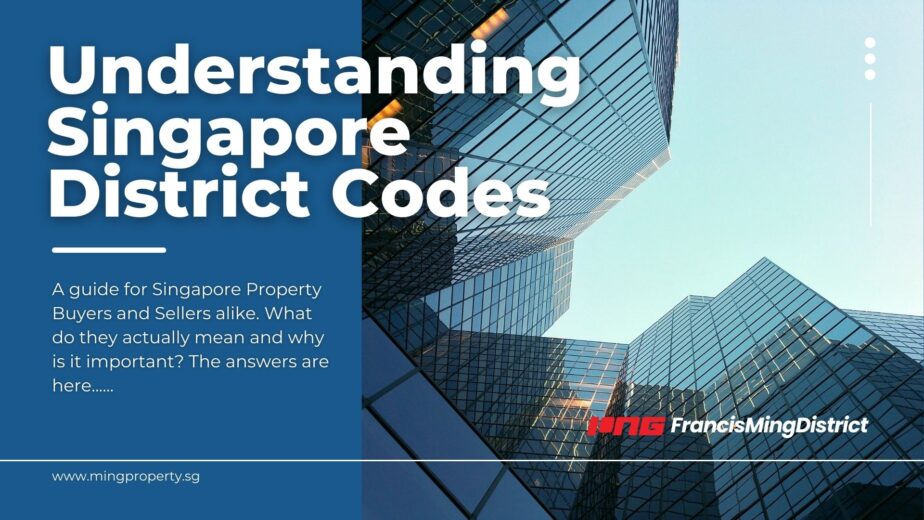Understanding Singapore District Codes: A Guide for Property Buyers

If you’re in the process of purchasing property in Singapore, you might have come across terms like “District 9” or “District 15” in real estate listings. But what do these district codes actually mean, and why are they important when buying or investing in property?
In this article, we’ll break down the concept of Singapore’s district codes, explaining how they work, their significance, and how they can help you make better property decisions.
What Are Singapore District Codes?
Singapore is divided into 28 districts, each with its own unique characteristics. The district codes were originally assigned in the 1970s, mainly for postal and administrative purposes, but over time they have become a convenient way to categorize and describe the different regions of the island.
Each district typically encompasses multiple neighborhoods or estates, giving buyers a sense of the area's location and vibe. For example, District 9 is often referred to as the prime shopping district, while District 15 is known for its coastal, family-friendly environment.
Why Are District Codes Important?
1. Location and Pricing
Property prices in Singapore vary greatly depending on the district. Prime districts like 9, 10, and 11 (collectively known as the Core Central Region) are home to prestigious addresses and tend to have higher property values. On the other hand, districts in suburban areas generally offer more affordable housing options.
2. Lifestyle Preferences
Each district offers different amenities, living environments, and vibes. For example:
- District 1 (Raffles Place, Marina Bay): This area is the financial hub of Singapore, perfect for professionals working in the CBD.
- District 15 (Katong, East Coast): Known for its seaside lifestyle and vibrant local culture, this district is popular among expatriates and families.
- District 19 (Serangoon, Hougang, Punggol): A growing residential area with good schools and family-friendly amenities.
3. Investment Potential
Investors often look at district codes when determining the potential for capital appreciation. Historically, properties in prime districts like 9, 10, and 11 tend to retain or increase their value due to their central locations. However, districts outside the core areas, such as District 19 (Hougang, Punggol), are seeing rapid development and could offer good opportunities for long-term investments.
Breakdown of Singapore's Districts
To help you better understand the landscape, here’s a quick overview of some popular districts and the areas they cover:
- District 1: Raffles Place, Marina Bay, Cecil Street (CBD and prime business areas)
- District 9: Orchard, River Valley, Cairnhill (High-end shopping and dining area)
- District 10: Bukit Timah, Holland Road, Tanglin (Known for upscale residential homes and reputable schools)
- District 11: Newton, Novena, Thomson (Prime residential area with access to good schools and healthcare)
- District 15: Katong, Joo Chiat, Marine Parade (Coastal living, known for local culture and good food)
- District 19: Serangoon, Hougang, Punggol (Emerging residential area with strong family appeal)
- District 21: Clementi, Upper Bukit Timah, Sunset Way (Quiet suburban areas with a focus on nature and greenery)
How to Choose the Right District
When deciding which district suits you best, consider the following factors:
1. Proximity to Work
If you work in the CBD, districts like 1, 2, and 9 might be more convenient. For those working in tech hubs like One-North, districts in the west (such as 5 and 21) could be ideal.
2. Family and Education
Families with school-going children may prefer districts with access to top schools. Districts 10 and 11 are home to many prestigious institutions, while District 19 offers good local schools in newer residential areas.
3. Amenities and Lifestyle
Love the outdoors? Coastal districts like 15 (East Coast) or 4 (Sentosa) offer a great lifestyle close to the water. If shopping and dining are a priority, District 9 near Orchard Road will suit you well.
Conclusion
Singapore’s district codes offer a practical way to navigate the property landscape, helping buyers and investors make informed decisions based on location, amenities, and investment potential.
Whether you’re looking for a luxurious home in the city, a family-friendly suburb, or a promising investment property, understanding these districts can give you an edge in your property search.
If you're interested in finding the right property for your needs, be sure to check out our property listings on Singapore Property Real Estate website and get a comprehensive analysis report of any property in Singapore, including recent transactions, property valuation, and future development plans by clicking on the highlighted links.
And, if you want to know which district your property is in, you can find it from our Singapore District Code Finder website. Just click on the link.

